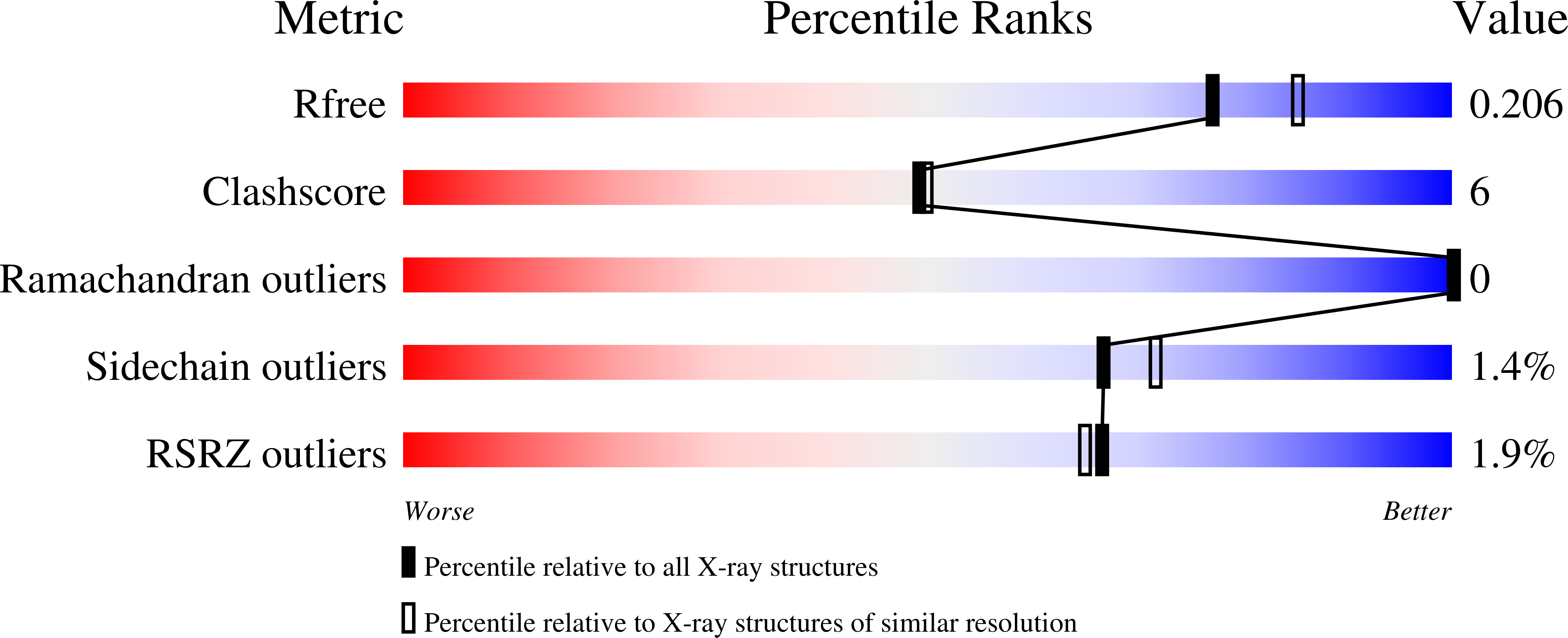Ubiquitin-like conjugation by bacterial cGAS enhances anti-phage defence.
Jenson, J.M., Li, T., Du, F., Ea, C.K., Chen, Z.J.(2023) Nature 616: 326-331
- PubMed: 36848932
- DOI: https://doi.org/10.1038/s41586-023-05862-7
- Primary Citation of Related Structures:
7UQ2 - PubMed Abstract:
cGAS is an evolutionarily conserved enzyme that has a pivotal role in immune defence against infection 1-3 . In vertebrate animals, cGAS is activated by DNA to produce cyclic GMP-AMP (cGAMP) 4,5 , which leads to the expression of antimicrobial genes 6,7 . In bacteria, cyclic dinucleotide (CDN)-based anti-phage signalling systems (CBASS) have been discovered 8-11 . These systems are composed of cGAS-like enzymes and various effector proteins that kill bacteria on phage infection, thereby stopping phage spread. Of the CBASS systems reported, approximately 39% contain Cap2 and Cap3, which encode proteins with homology to ubiquitin conjugating (E1/E2) and deconjugating enzymes, respectively 8,12 . Although these proteins are required to prevent infection of some bacteriophages 8 , the mechanism by which the enzymatic activities exert an anti-phage effect is unknown. Here we show that Cap2 forms a thioester bond with the C-terminal glycine of cGAS and promotes conjugation of cGAS to target proteins in a process that resembles ubiquitin conjugation. The covalent conjugation of cGAS increases the production of cGAMP. Using a genetic screen, we found that the phage protein Vs.4 antagonized cGAS signalling by binding tightly to cGAMP (dissociation constant of approximately 30 nM) and sequestering it. A crystal structure of Vs.4 bound to cGAMP showed that Vs.4 formed a hexamer that was bound to three molecules of cGAMP. These results reveal a ubiquitin-like conjugation mechanism that regulates cGAS activity in bacteria and illustrates an arms race between bacteria and viruses through controlling CDN levels.
Organizational Affiliation:
Department of Molecular Biology, University of Texas Southwestern Medical Center, Dallas, TX, USA.
















